The 2020 Toyota Supra Is a Resurrection of a Hero
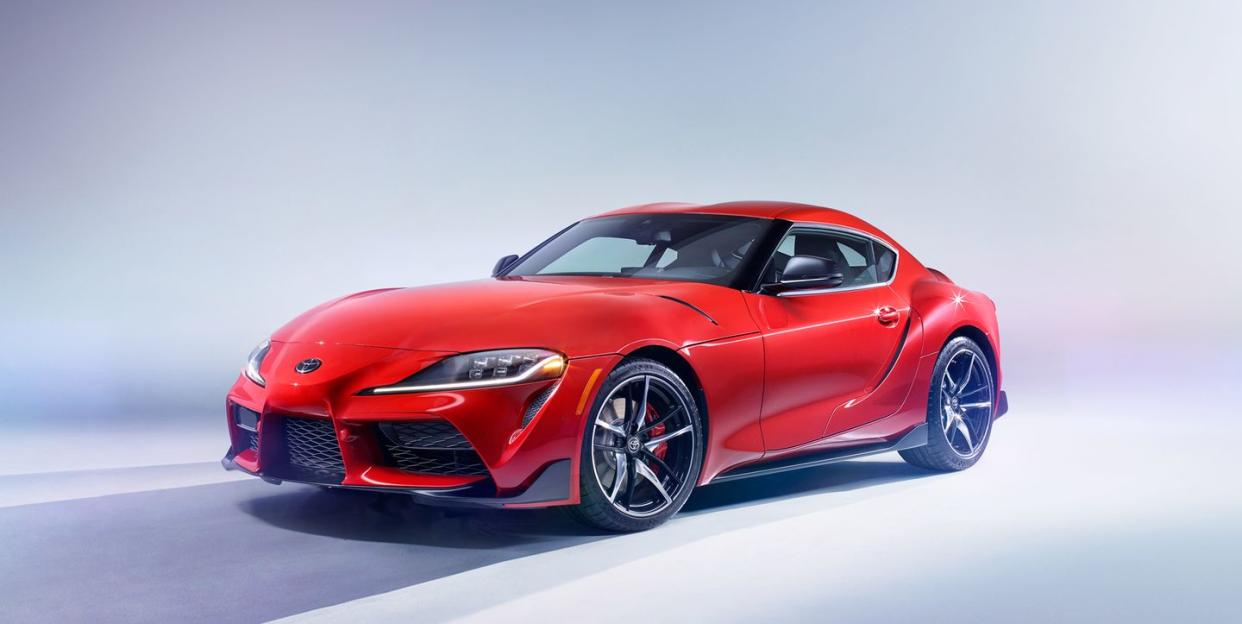
UPDATE 1/14/19: We now have additional details on the Supra's pricing, trim levels, options, and colors, as well as on the Launch Edition.
Toyota's fourth-generation Supra Turbo (chassis code A80), sold here from 1993 to 1998, has fronted movie franchises, shredded drag strips in as little as six seconds, and—if we recall correctly—conducted the London Philharmonic at the request of Queen Elizabeth II. The iron-strong 2JZ straight-six under its hood has worn turbochargers big enough to sleep in and swims like a shark in a nitrous-oxide ocean. And yet, Toyota has left us Supraless for 20 years, sitting idly by as the car accumulated a mountain of pop-culture street cred.
Now the Big T is finally leveraging that mighty reputation in the form of the new (A90) Supra, which will blast out of a Magna Steyr assembly plant in Graz, Austria, alongside its brother, the BMW Z4. Yes, under a skin based on the FT-1 concept car from 2014 beats a turbocharged 3.0-liter straight-six just as its fast and furious forefather had. Beyond that, well . . .
Instead of the herculean 2JZ, the A90 generation gets a version of BMW's B58 turbocharged and direct-injected 3.0-liter inline-six making 335 horsepower and 365 lb-ft of torque. Naturally, there's room for more power—the Z4's B58 is tweaked to 382 horses—but modern engines are already so stressed that it's unlikely this one has the reserve capacity needed to support such monumental power increases as those that made the 2JZ legendary.
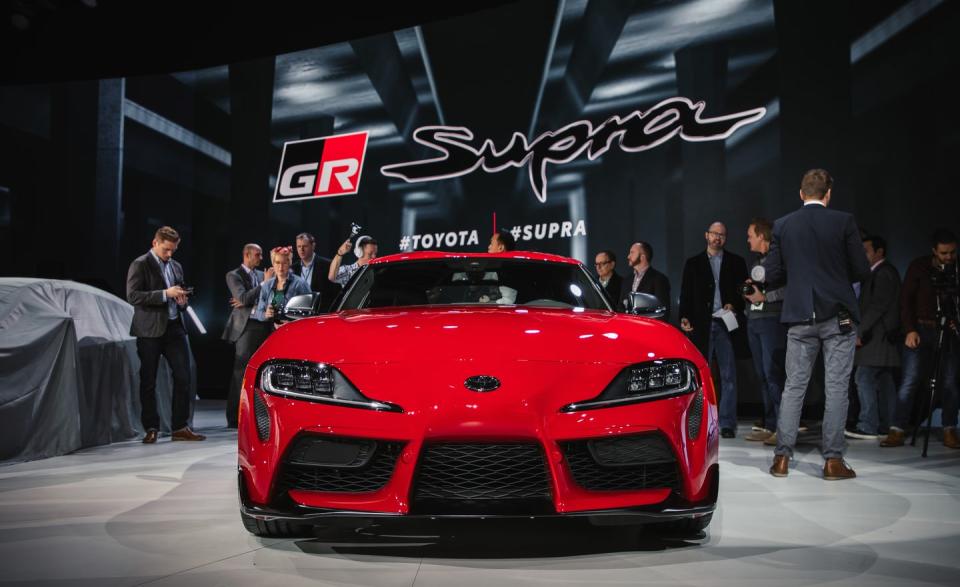
The chassis, however, will support less power. The chief engineer, Tetsuya Tada, has admitted that a four-cylinder version of the Supra will come later. We suggest that such a machine be called Celica. The only transmission offered on the 2020 model will be a version of the ubiquitous ZF eight-speed automatic gearbox. Toyota isn't yet planning to offer a manual in the A90, though BMW will supposedly offer a stir-it-yourself stick with some Z4 engines in some markets but not ours.
Like the engine, most of the 2020 Supra's mechanical substance comes from BMW's parts bin. The component set here is the Cluster Architecture (a.k.a. CLAR) on which BMW erects most of its products from the upcoming 3-series on up. While most of the structural duty is handled by unitized steel stampings, some body panels, such as the hood and the door skins, are aluminum, and the rear hatch is made from a composite material.
"The way the partnership worked," explains Ben Haushalter, Toyota's product manager for the Supra, "is that the styling is 100 percent Toyota. We basically partnered with BMW for their platform and powertrains. Once we had decided on the hard points for the car, we sort of went our own ways."
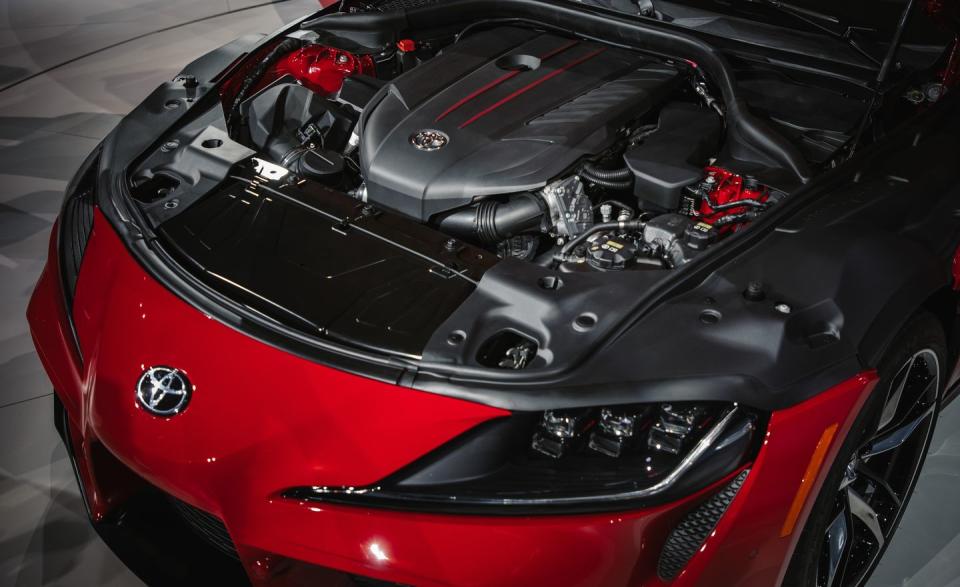
Those hard points include a 97.2-inch wheelbase. At 172.5 inches overall, the Toyota is 1.8 inches longer than its BMW sibling and 5.2 inches shorter than the fourth-generation Supra on a wheelbase that's 3.2 inches more meager. Of course, the old Supra had a nearly useless rear seat, while this new one is honest enough to skip the two-plus-two configuration altogether.
Haushalter says that 50/50 front/rear weight distribution was a major focus of the development program. To achieve that balance, the cockpit's mass is pushed back toward the rear-axle line and the battery is located in the cargo hold. According to C/D's scales, the 1993 Supra Turbo put 53.0 percent of its 3480 pounds on the front wheels, thanks in large part to the iron-block 2JZ. Toyota claims that the new car weighs 3397 pounds.
Initially, Toyota will deliver Supras on 19-inch wheels shod with Michelin Pilot Super Sport summer tires measuring 255/35ZR-19 in front and 275/35ZR-19 in the rear. Sometime after launch, the 19s will be promoted to an option, and 18-inch wheels will become standard. Adaptive dampers are also standard.
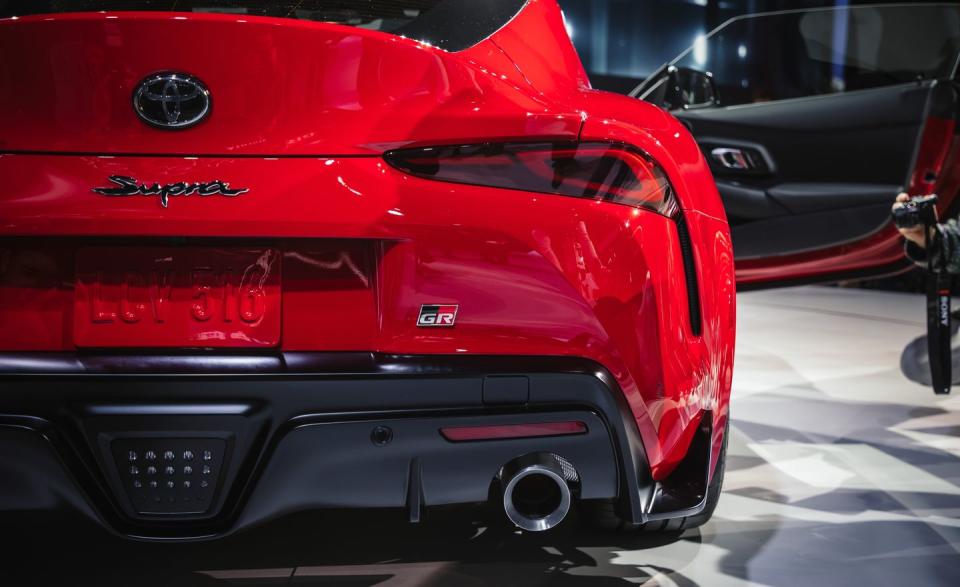
There's some old-school Supra in the A90's headlight and front-fender design, but there's also some Formula 1 car in how the center section of the hood becomes a pronounced schnoz up front. And it doesn't take much to see echoes of the 1967 2000GT in the greenhouse design as it tapers down to a pinched tail. From any angle, the new Supra is voluptuous. But is it beautiful?
"It's 'function sculpting,' " explains Kevin Hunter of Calty, the Toyota design studio in California that developed the FT-1 concept. "Carving out surface where you didn't need something lets [us] not only reduce mass but visually reduce the mass. If you look at all the ins and outs on this car's front end, we tried to be efficient about where we were putting surface. It's not only beautiful, but it looks efficient as well." Okay, so at least the concept's designer thinks it looks good.
Standard color choices will include red, blue, silver, white, black, and gray, while yellow will cost $400 extra and a matte gray will be a $1200 option. The first 1500 units coming to the U.S. will be designated as Launch Edition models, and those cars—available in red, black, or white—have red mirror caps, matte black wheels, and a plaque on the dashboard to denote them as special.
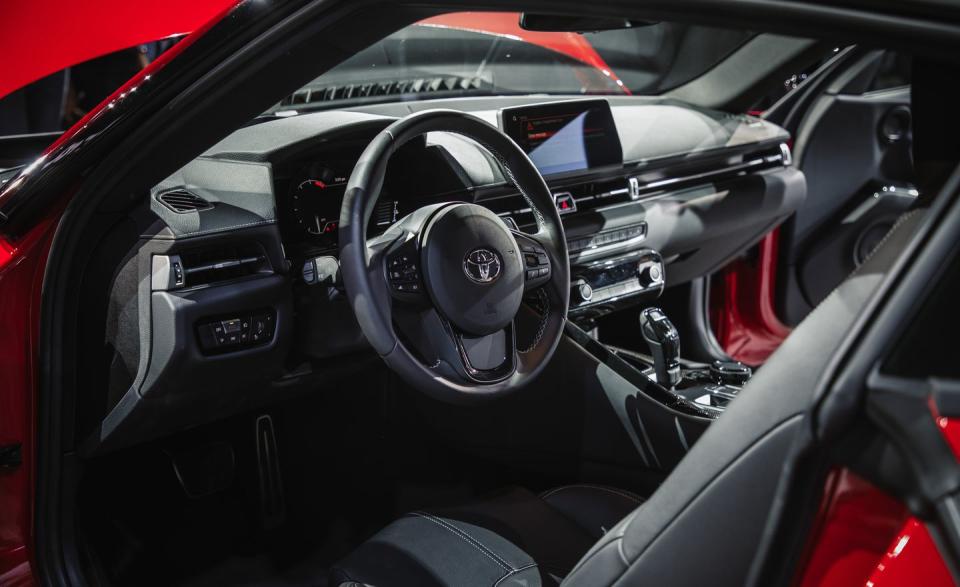
Toyota also designed the interior while relying on BMW for many of the bits and pieces. The infotainment system behind the optional 8.8-inch center screen is BMW based but with fresh Supra-spec graphics. Standard features on the base 3.0 trim level include dual-zone automatic climate control, rain-sensing wipers, and a smaller 6.5-inch display, while the 3.0 Premium trim, for an extra $4000, adds navigation, heated leather seats, and the larger screen with Apple CarPlay compatibility. A JBL premium audio system and a few active-safety features are optional.
BMW, having carried much of the development burden, has reserved the right to first sales. The Z4 should hit showrooms this spring as a 2019 model, with the Supra following sometime in the middle of the year as a 2020. The Supra starts at $50,920, close to what BMW will command for a four-cylinder version of its car. A Supra with a German engine and German bones is a little hard to swallow, but it's harder still to argue against more rear-drive sports cars in our market, especially when they're powered by sweet inline-sixes.
"When you boil it all down," says Bill Fay, Toyota's senior VP of operations, "the Supra delivers a certain level of excitement to the brand that you can't bring with trucks and hybrids." Having already driven a prototype, we agree.
You Might Also Like

